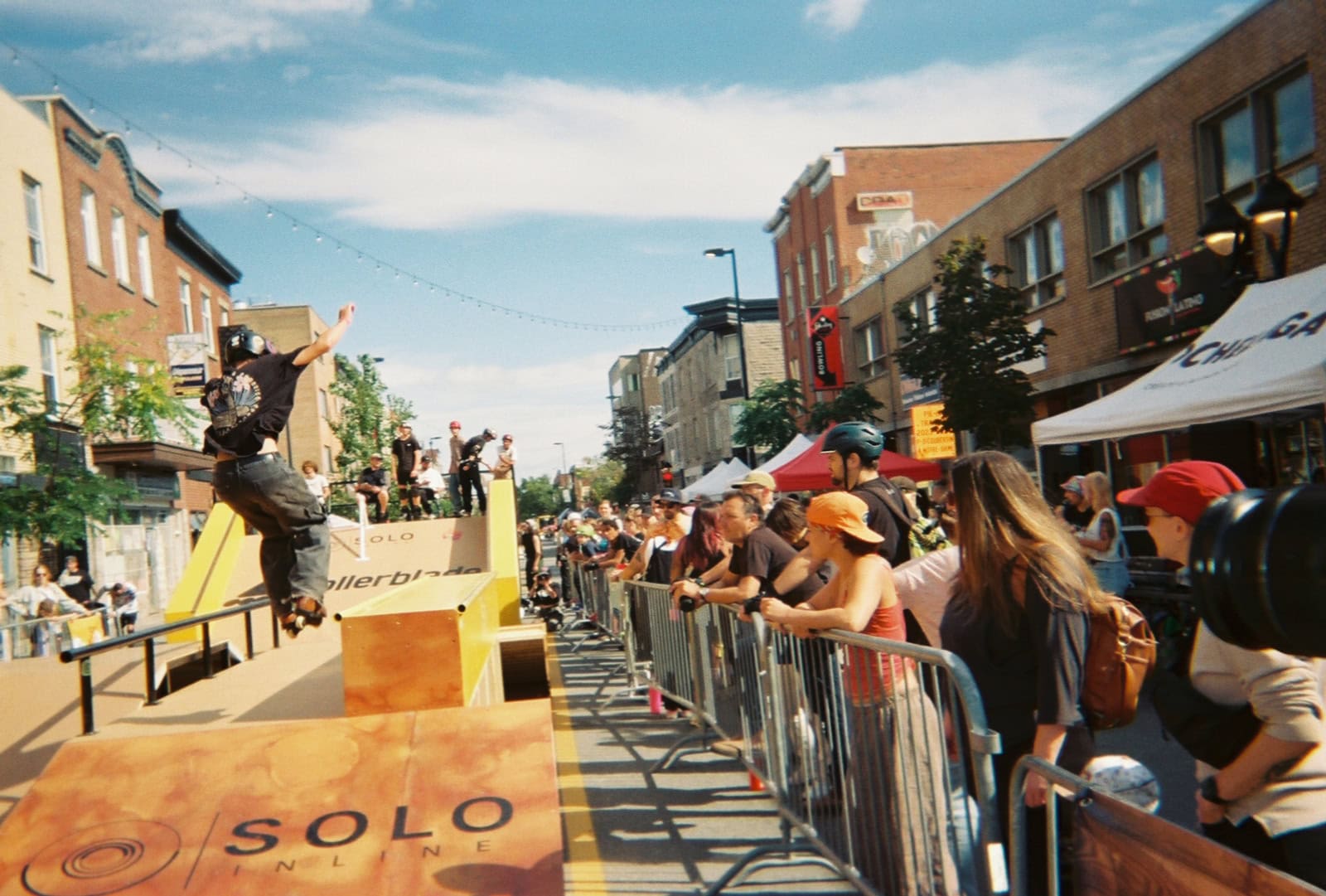RollerFitness - Our Beginner's Guide To Roller Skating
Roller skating is not only a fun activity but also a great way to stay active, keep fit and enjoy the outdoors - or indoors! If you've never tried it before, don't worry! With a few tips and a bit of practice, you'll be gliding around like a pro in no time. Here's RollerFitness’s Beginners Guide to Roller Skating… 1. Choose the Right Skates: Before you hit the streets, make sure you have the right skates. Look for a pair that fits comfortably and provides good ankle support. If you're unsure, many skate shops offer fitting services to help you find the perfect pair. Also, choose whether you would like quad skates or inlines skates (roller blades) although both offer the freedom of rolling, each have their own pros and cons depending on what type of activities you would like to try.2. Safety First: Don't forget your safety gear! A helmet is essential to protect your head in case of falls. Additionally, wrist guards, knee pads, and elbow pads can help prevent injuries as you learn. Not only will having the correct safety gear help prevent these injuries but it will also give you an increased confidence as you begin your roller skating journey. 3. Find a Flat, Smooth Surface: When you're first starting out, it's best to practice on a flat, smooth surface free of obstacles. Look for a local skating rink, basketball court, or empty car park where you can skate without worrying about bumps or cracks in the pavement or loose stones and chipping’s. As you become more confident on your roller skates, these things won’t be such a big deal, but until you feel ready, we recommend choosing the best skating conditions that are available to you.4. Master the Basics:Before you start trying fancy moves and hitting the ramps, focus on mastering the basics. Start by getting comfortable standing in your skates and finding your balance. Practice marching in place and taking small steps forward and backward to get a feel for how the skates move. Another great way is to wear your roller skates at home, even if you don’t live in a mansion, having the skates on your feet and manoeuvring around will help increase your co-ordination and awareness - Kitchen’s are usually a good start.5. Learn to Stop: Learning how to stop is crucial for staying safe while roller skating. There are several stopping techniques you can try, including the T-stop, plow stop, and heel brake. Take the time to practice each one until you find the method that works best for you and depending on whether you are in roller skates or inline roller blades, this will also play a part in the best practices for ensuring you come to a stop safely.6. Practice, Practice, Practice! Like any skill, roller skating takes practice to master. Set aside time each week to practice your skills and gradually build your confidence on skates. Don't get discouraged if you don't progress as quickly as you'd like—just keep practicing, and you'll improve over time. Just remember, some people pick up certain skills easier than others, so don’t be too hard on yourself if it takes longer than your friends - ‘comparison is the killer of joy’ and we don’t want that for you! 7.Take a Lesson If you're struggling to get the hang of roller skating on your own, consider taking a lesson from a professional instructor. Many skating rinks offer beginner classes where you can learn the basics in a supportive environment and have someone oversee where it is you might be going wrong. Being around others like you while roller skating can help you feel like you're part of a team. It's a good way to meet people who share the same goals.8. Have Fun! Most importantly, remember to have fun! Rolle

Roller skating is not only a fun activity but also a great way to stay active, keep fit and enjoy the outdoors - or indoors! If you've never tried it before, don't worry! With a few tips and a bit of practice, you'll be gliding around like a pro in no time. Here's RollerFitness’s Beginners Guide to Roller Skating…

1. Choose the Right Skates:
Before you hit the streets, make sure you have the right skates. Look for a pair that fits comfortably and provides good ankle support. If you're unsure, many skate shops offer fitting services to help you find the perfect pair. Also, choose whether you would like quad skates or inlines skates (roller blades) although both offer the freedom of rolling, each have their own pros and cons depending on what type of activities you would like to try.
2. Safety First:
Don't forget your safety gear! A helmet is essential to protect your head in case of falls. Additionally, wrist guards, knee pads, and elbow pads can help prevent injuries as you learn. Not only will having the correct safety gear help prevent these injuries but it will also give you an increased confidence as you begin your roller skating journey.

3. Find a Flat, Smooth Surface:
When you're first starting out, it's best to practice on a flat, smooth surface free of obstacles. Look for a local skating rink, basketball court, or empty car park where you can skate without worrying about bumps or cracks in the pavement or loose stones and chipping’s. As you become more confident on your roller skates, these things won’t be such a big deal, but until you feel ready, we recommend choosing the best skating conditions that are available to you.
4. Master the Basics:
Before you start trying fancy moves and hitting the ramps, focus on mastering the basics. Start by getting comfortable standing in your skates and finding your balance. Practice marching in place and taking small steps forward and backward to get a feel for how the skates move. Another great way is to wear your roller skates at home, even if you don’t live in a mansion, having the skates on your feet and manoeuvring around will help increase your co-ordination and awareness - Kitchen’s are usually a good start.
5. Learn to Stop:
Learning how to stop is crucial for staying safe while roller skating. There are several stopping techniques you can try, including the T-stop, plow stop, and heel brake. Take the time to practice each one until you find the method that works best for you and depending on whether you are in roller skates or inline roller blades, this will also play a part in the best practices for ensuring you come to a stop safely.
6. Practice, Practice, Practice!
Like any skill, roller skating takes practice to master. Set aside time each week to practice your skills and gradually build your confidence on skates. Don't get discouraged if you don't progress as quickly as you'd like—just keep practicing, and you'll improve over time. Just remember, some people pick up certain skills easier than others, so don’t be too hard on yourself if it takes longer than your friends - ‘comparison is the killer of joy’ and we don’t want that for you!

7.Take a Lesson
If you're struggling to get the hang of roller skating on your own, consider taking a lesson from a professional instructor. Many skating rinks offer beginner classes where you can learn the basics in a supportive environment and have someone oversee where it is you might be going wrong. Being around others like you while roller skating can help you feel like you're part of a team. It's a good way to meet people who share the same goals.
8. Have Fun!
Most importantly, remember to have fun! Roller skating is all about enjoying yourself and getting some exercise in the process. Don't be afraid to laugh at yourself when you stumble, and celebrate your progress along the way. A great way is to document your journey through video and photos so on the days where you might feel you aren’t getting anywhere, it’s always good to look back and see how far you have come.
With these tips in mind, you'll be well on your way to becoming a confident roller skater and even perhaps a RollerFitness Instructor in the making. So lace up those skates, hit the rink (car park or kitchen) and get ready to roll.
What's Your Reaction?








































